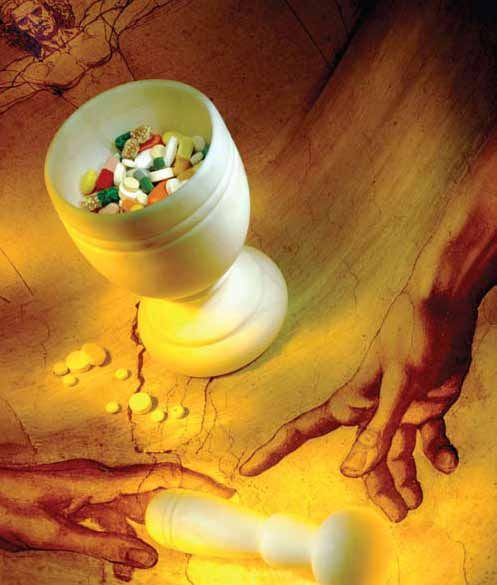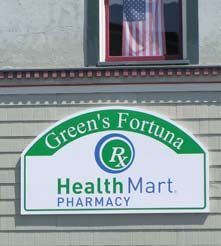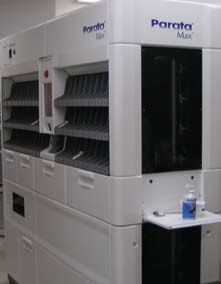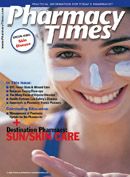Publication
Article
Pharmacy Times
Innovators in Pharmacy: Parata Pioneers the Art and Science of Automated Dispensing
Author(s):
Editor’s Note: This is the first in a series of feature articles on innovative companies serving the pharmacy market. If you would like to submit your recommendation of a company that you consider a leader, please e-mail your suggestion to Alicia Rybovic at arybovic@ PharmacyTimes.com.
The Wikipedia entry for “innovation” includes the following passage: “The goal of innovation is positive change, to make someone or something better. Innovation leading to increased productivity is the fundamental source of increasing wealth in an economy.”

Automation pioneer Parata Systems, LLC, makers of the popular dispensing systems, the RDS, the Max, and the Mini, believes that a commitment to innovation is behind the success that the company has achieved in a relatively short period. Parata entered the automated dispensing market with a bang in 2001 and, in less than a decade, has established itself as an industry leader, with more than 500 employees and a nationwide roster of both large and small pharmacy clients.
In 2006, Parata acquired the assets of the Automated Prescription Systems business unit from McKesson Corp and entered into a long-term strategic alliance, under which McKesson became the sole third-party distributor for all Parata products in North America as well as a significant minority investor in Parata.
To fully appreciate the technology and innovation behind an automated dispensing machine, it is worth an hour or 2 to take a tour of Parata’s Durham, North Carolina—based headquarters. From the outside, the 1-story building looks like your typical office park–style collection of cubicles and kitchens, which, on first glance, it is. Yet other parts of the building resemble a busy science laboratory. One room is walled off with egg crates and wired to measure the noise generated by the dispensing machines. Dozens of rooms are used to test new designs and processes, from bottle-capping—which is not as simple as it might seem—to the intricate interaction of the wheels, belts, and microchips that combine to make a dispensing machine function.
A metrology lab, which on the day of our visit was staffed by only 1 employee, is used to measure the inbound raw materials that constitute the thousands of parts that work together seamlessly to dispense prescriptions. “We’re looking at the design that should be, and measuring against the part that is,” says Tom Rhoads, Parata’s executive vice president of customer and market strategies.
Testing stations across the facility are constantly in motion, going through thousands of movements per minute to measure how the machines will perform over the daily grind in pharmacies. Other areas are reserved for diagnosing and adjusting existing machines, though much of the maintenance and repair work, when needed, is handled by traveling Parata representatives when they are on site at the individual pharmacies.
A Customer’s Perspective
Green’s Fortuna Pharmacy in Fortuna, California, is one such location. Robert Johnson, RPh, has run the pharmacy for more than 18 years. Dramatic increases in his pharmacy business led him to a crucial decision: he had to either automate to improve efficiency, or he worried that he was going to lose his best pharmacists. “Trying to keep up with the volume was just too stressful,” Johnson says. So he invested initially in a McKesson automated device and was happy to upgrade when Parata took over that segment of the business.
“We’ve doubled our business since we automated,” Johnson says. “Besides making our lives easier, the techs are filling all the prescriptions, so my pharmacists are able to interact with patients. We’re always available, and we

offer the kind of customer service others can’t. We can serve the customer quicker and better.”
Johnson, an innovator himself, appreciates Parata’s constant drive to improve. Each time he has upgraded to new equipment, he says, fewer and fewer interruptions in service have occurred. He points to improvements in safety features as the most important aspect of his decision to automate. “I’ve always believed that to be more on the cutting edge is the only way we’re going to keep ahead in the game,” he says. “It takes awhile to make the investment back, but that didn’t matter to me. We were busy enough that we had to do something. And we’ve never looked back. I’ve been automated now for about 10 years, and I can’t even imagine a time when I wasn’t.”
Johnson has welcomed customers behind the counter to see his current unit—the Parata Max—at work. “They’re astonished at that type of automation, and I’d say that 99.99% of our customers have been positive about it. We come from a real rural county that is very pro-green. It’s a big deal around here.”
A First for Pharmacy
Given all the moving parts and processes, Parata naturally was concerned about how its equipment affected the indoor environment. Late last year, the company reached out to the GREENGUARD Environmental Institute (GEI), an independent, nonprofit organization that seeks to protect human health and quality of life through programs that improve indoor air. The program relies on comprehensive third-party standards to establish and maintain measurable indicators that certified products must achieve. In late May, GEI granted the Parata RDS the first-ever GREENGUARD Indoor Air Quality Certification for pharmacy automation equipment.
Seeking the certification was a bold move; it had never been done in the pharmacy arena before. Companies in other industries have found that certification is no walk in the park. “About 60% of the products we see initially cannot meet the standards,” says GEI founder Marilyn Black, PhD. “It’s a pretty high bar. What we find for many manufacturers when they first approach us about evaluation is that they don’t know what they’re getting into. They don’t understand what impact their product has on the environment.”
GEI was established in 2001, and it was initially focused on testing building materials and furnishings for commercial spaces. “We learned years ago that indoor air can be much dirtier than outdoor air,” says Black. “There has been a push to improve air quality for the people who live and work in it. Nothing is more important to people’s health than the air they breathe.”
Parata reached out to GEI to see if the organization had established standards that would be applicable to their dispensing products. Black jumped at the chance. “Health care is one of our target environments, because people are in that environment because they have a health concern,” Black explains. “You not only have employees, but you have customers and patients. They may already be immune-compromised, so they may be very sensitive to the environment and what they’re exposed to. We believed that certifying this type of product would be very positive for the market and health care environments overall.”
“Safety has always been a major tenet of any technology we roll out,” Rhoads says. “GREENGUARD was a natural next step for us. We’ve seen a major green emergence recently, and we’ve been thinking about how to validate the safety of our equipment in the marketplace.”
The rigorous certification process involved testing in a completely controlled environment at levels beyond the capacity of a typical pharmacy. According to Rhoads, most pharmacies process around 200 to 300 prescriptions per day; GEI tested the air quality around the RDS at a rate of 1000 prescriptions per day.

“We hope that the industry looks at this and follows our lead. For the good of the patients, everyone should be pursuing these types of certifications to be sure they’re not affecting the air quality in any way, especially as the pharmacy morphs into a health center versus just a place to pick up a prescription,” Rhoads says.
“This is something that’s becoming almost a prerequisite in today’s environment,” says Black. “If you want to put a product in the green, sustainable environments developing today, you have to have your product qualified to meet this standard. Many manufacturers have to go back and change things because they can’t pass. With Parata, it was our understanding when they came forward, that they appeared to be an innovative leadership type of company looking to step out in a leadership role. They realized that they would be the first to be certified in this particular product category. We like to see that, because in our experience, it is the leadership companies that have the forward vision to take these steps to qualify.”
Ongoing Commitment to Innovation
Judging by the amount of testing ground that occupies Parata’s Durham headquarters, market leadership has not overshadowed the company’s enthusiasm for innovation. During our onsite visit, Rhoads offered a telling anecdote about how the capital requirements of entering markets often hamstring businesses from continually improving their product. “Parata was fortunate enough to have had immediate success, and thus access to the ongoing investment it takes to stay ahead of the curve,” explains Rhoads.
“We let the technology speak for itself in the market,” notes Rhoads. “We have more than 2000 machines out there. In my opinion, the market has spoken. Now, we’ll continue to innovate and put our customers out front, both figuratively and literally, letting them get in front of the consumer.”
GREENGUARD certification is just 1 step in the process. “I think the certification builds upon our safety platform and leadership platform,” Rhoads explains. “It’s looking at where pharmacy is going to go, and it allows pharmacists to do their job without having to worry about the counting and safety. That’s why we continue to innovate; the needs of the pharmacist will continue to change, and we want to be out in front of it.”







